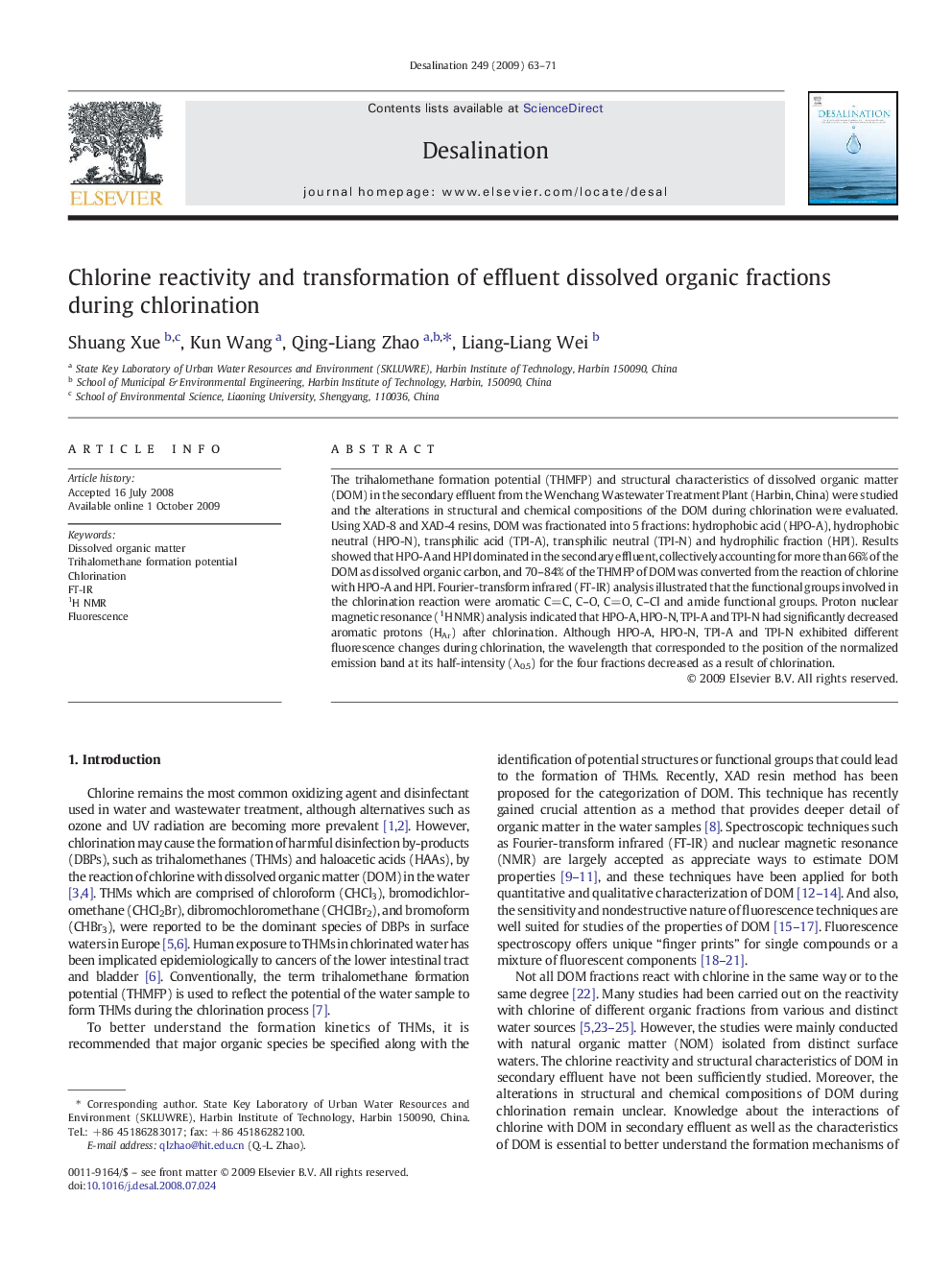| Article ID | Journal | Published Year | Pages | File Type |
|---|---|---|---|---|
| 626120 | Desalination | 2009 | 9 Pages |
Abstract
The trihalomethane formation potential (THMFP) and structural characteristics of dissolved organic matter (DOM) in the secondary effluent from the Wenchang Wastewater Treatment Plant (Harbin, China) were studied and the alterations in structural and chemical compositions of the DOM during chlorination were evaluated. Using XAD-8 and XAD-4 resins, DOM was fractionated into 5 fractions: hydrophobic acid (HPO-A), hydrophobic neutral (HPO-N), transphilic acid (TPI-A), transphilic neutral (TPI-N) and hydrophilic fraction (HPI). Results showed that HPO-A and HPI dominated in the secondary effluent, collectively accounting for more than 66% of the DOM as dissolved organic carbon, and 70-84% of the THMFP of DOM was converted from the reaction of chlorine with HPO-A and HPI. Fourier-transform infrared (FT-IR) analysis illustrated that the functional groups involved in the chlorination reaction were aromatic C=C, C-O, C=O, C-Cl and amide functional groups. Proton nuclear magnetic resonance (1H NMR) analysis indicated that HPO-A, HPO-N, TPI-A and TPI-N had significantly decreased aromatic protons (HAr) after chlorination. Although HPO-A, HPO-N, TPI-A and TPI-N exhibited different fluorescence changes during chlorination, the wavelength that corresponded to the position of the normalized emission band at its half-intensity (λ0.5) for the four fractions decreased as a result of chlorination.
Keywords
Related Topics
Physical Sciences and Engineering
Chemical Engineering
Filtration and Separation
Authors
Shuang Xue, Kun Wang, Qing-Liang Zhao, Liang-Liang Wei,
